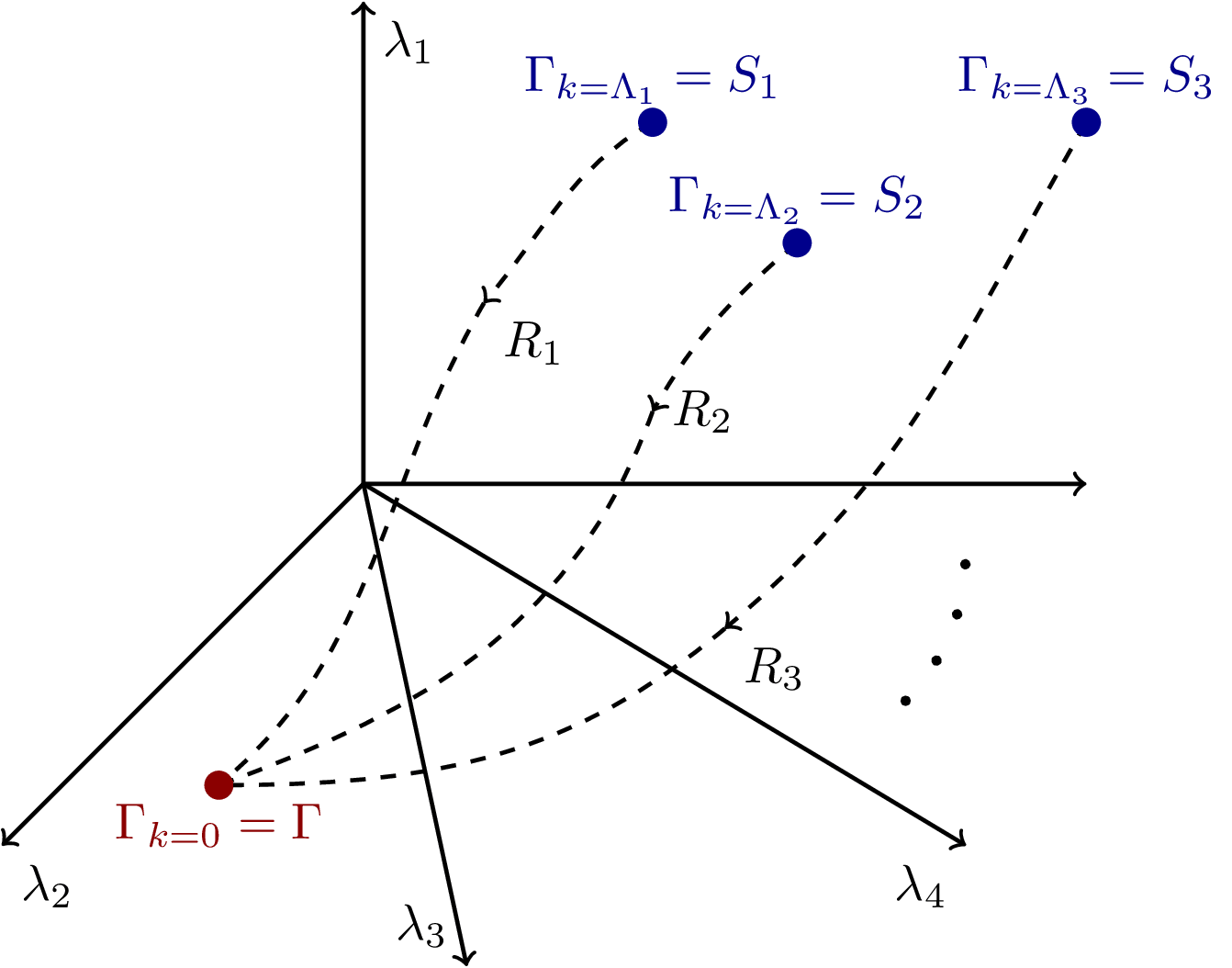RG Flow in Theory Space
Visualization of renormalization group (RG) flow trajectories in the theory space of all possible coupling constants (λ₁, λ₂, λ₃, λ₄) allowed by symmetries. The diagram shows how different microscopic actions (S₁, S₂, S₃) obey the same symmetries and thus flow to the same quantum effective action (Γ) through different paths, each corresponding to a different choice of infrared regulator R_k(q). This illustrates the universality of the effective action despite different starting points and regulators.

Download
Code
rg-flow-in-theory-space.typ (66 lines)
rg-flow-in-theory-space.tex (38 lines)